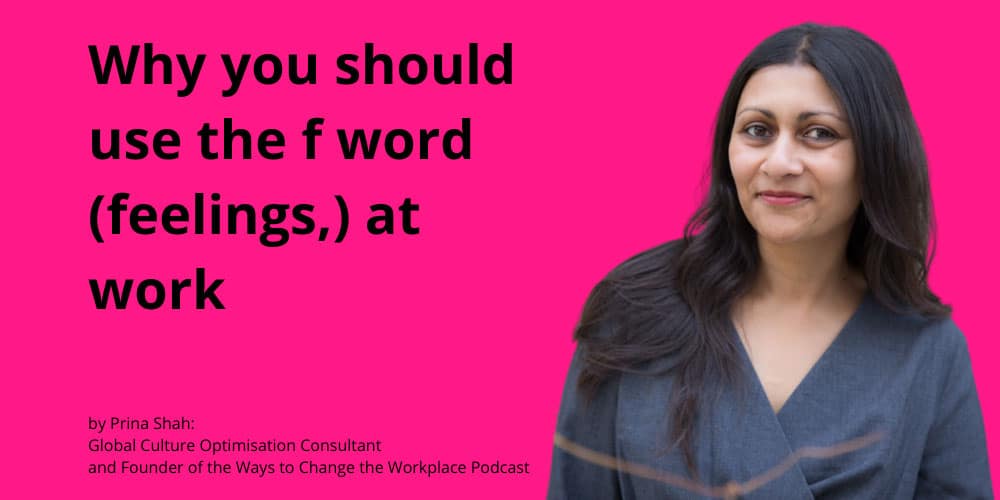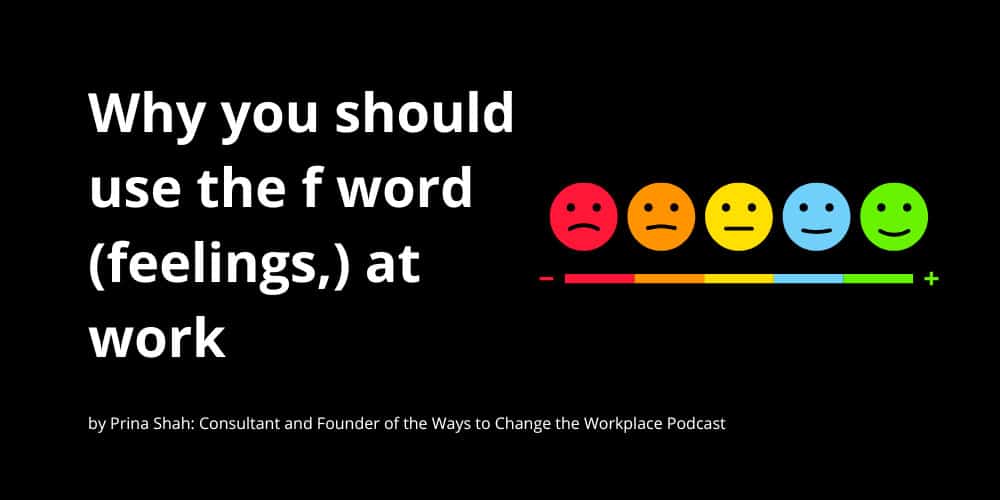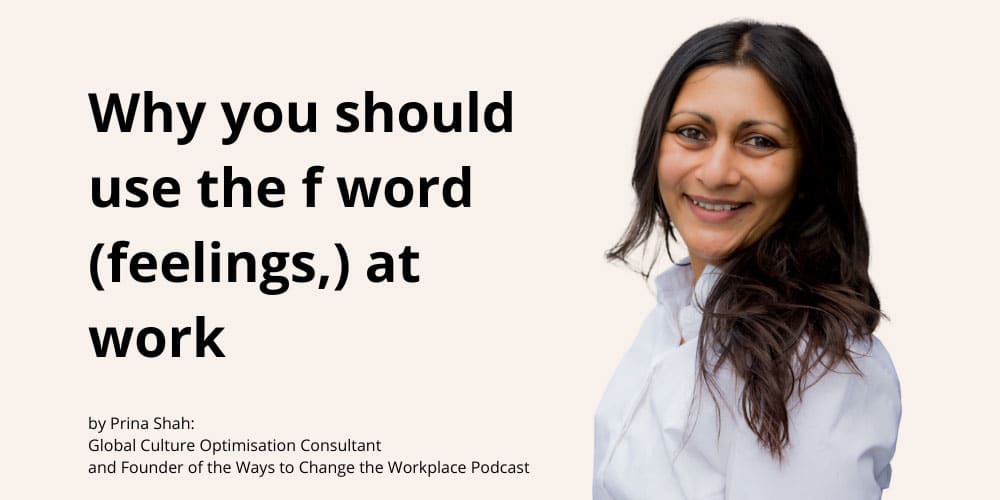Why you should use the f word (feelings,) at work

As the saying goes, “leave your emotions at the door” when it comes to work. Many of us have been taught to hide our feelings and prioritize rationality and logic in the workplace. But what if I told you that utilizing the f word (feelings) at work could actually improve your performance and enhance your work relationships? Let’s explore why you should use the f word at work and how to do it effectively.
First, let’s talk about emotional contagion. Emotional contagion is the phenomenon where emotions can be transmitted from one person to another, causing a ripple effect in a group or organization. In a study by Hatfield, Cacioppo, and Rapson (1993), they found that people tend to automatically mimic and synchronize their emotions with those around them, whether they are aware of it or not. This means that if someone is feeling negative emotions, it can quickly spread to their colleagues, resulting in a toxic work environment.

However, the flip side is that positive emotions can also be contagious. Barsade and Gibson (2007) found that when employees experienced positive emotions, such as joy or enthusiasm, it led to higher job satisfaction and better performance. This highlights the importance of acknowledging and expressing emotions in the workplace, as it can have a significant impact on the overall mood and productivity of the organization.
But how do we effectively use the f word in the workplace without causing a negative emotional contagion? It starts with emotional regulation. Emotion regulation refers to the ability to manage and control our emotions in a way that is appropriate for the situation. In a study by Totterdell and Holman (2003), they found that employees who were able to regulate their emotions effectively had higher job satisfaction and better performance in customer service roles.
So, how can we regulate our emotions effectively in the workplace? The first step is to identify and acknowledge our emotions. We can do this by simply asking ourselves how we are feeling throughout the day. If we’re feeling overwhelmed or stressed, we can take a break or practice self-care to regulate those emotions.
Once we have identified our own emotions, we can start to express them appropriately to our colleagues. This doesn’t mean we have to become emotional and dramatic in the workplace. Instead, we can use “I” statements to express how we are feeling without placing blame on others. For example, instead of saying “You’re making me angry,” we can say “I feel frustrated when this happens.”
By expressing our emotions in a healthy and appropriate way, we can create a more authentic and transparent work environment. This can lead to better communication, improved relationships with colleagues, and higher job satisfaction.

But what about the fear of being perceived as weak or unprofessional? It’s important to remember that emotions are a natural and essential part of being human. By acknowledging and expressing our emotions, we are showing vulnerability and authenticity, which can actually enhance our professional image. It’s okay to be human at work.
In conclusion, using the f word (feelings) at work can have a significant positive impact on our performance and relationships with colleagues. By regulating our emotions and expressing them appropriately, we can create a more authentic and transparent work environment. So, the next time you’re feeling a certain way at work, don’t be afraid to use the f word. It just might improve your day and those around you. To gain more practical insights as to how you can create a more emotional culture at work, tune in to this Ways to Change the Workplace Podcast episode titled: “Using the F Word at Work: Feelings and How to Create an Emotional Culture.”
Written by Prina Shah.
Have you read?
World’s trendiest countries, 2023.
World’s Richest People (Top Billionaires, 2023).
Best Apps for Reading News for Google’s Android and Apple’s iOS.
Music successful CEOs and C-level executives listen to.
Which are the healthiest countries in the world for 2023?
Bring the best of the CEOWORLD magazine's global journalism to audiences in the United States and around the world. - Add CEOWORLD magazine to your Google News feed.
Follow CEOWORLD magazine headlines on: Google News, LinkedIn, Twitter, and Facebook.
Copyright 2025 The CEOWORLD magazine. All rights reserved. This material (and any extract from it) must not be copied, redistributed or placed on any website, without CEOWORLD magazine' prior written consent. For media queries, please contact: info@ceoworld.biz











